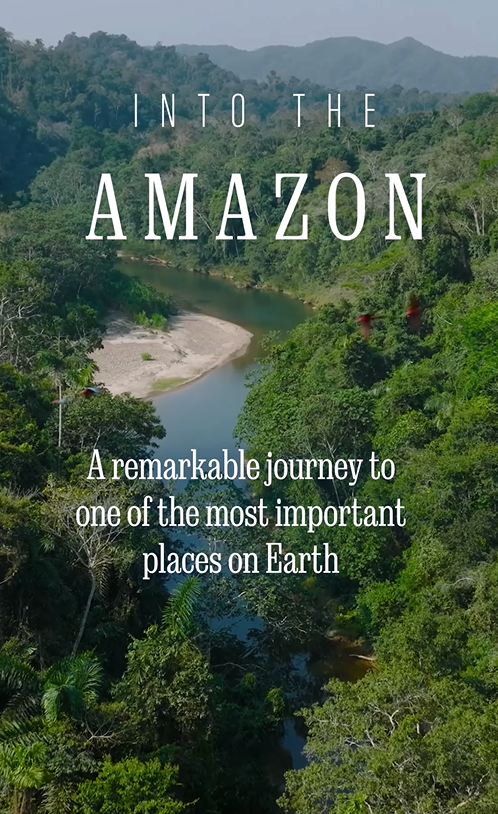Watch Expedition Amazon, now streaming on Disney+!
| | |
| |
| |
|
Over two years working across the entire Amazon ecosystem, from the Andes to the Atlantic, National Geographic gathered an incredible trove of material that helps us all to understand this critically important region in an entirely new way. And I believe our interactive digital experience, “Into the Amazon,” is the best way to immerse yourself in what we discovered.
You’ll meet our National Geographic Explorers and hear about their exciting work, from swimming with pink dolphins to exploring the high mountains at the river’s source to examining the “plume” where the Amazon meets the sea and feeds our oceans.
If you’re interested in more of these kinds of stories, and want to support our ongoing efforts to bring them to you, please consider subscribing here.
Nathan Lump, Editor in Chief |
|
| |
| | |
|
|
PHOTOGRAPH BY THOMAS PESCHAK
|
|
|
|
|
The Amazon begins in the mountains, where waterfalls, like this one beneath Nevado Ausangate in Peru, are fed by melting snow and ice.
|
|
|
|
|
 |
|
|
PHOTOGRAPH BY THOMAS PESCHAK
|
|
|
|
|
The Amazon River doesn’t end when it meets the Atlantic. Instead, it becomes a massive plume of fresh water that fans out across the Atlantic for hundreds of miles.
|
|
|
|
|
|
| |
|
PHOTOGRAPH BY THOMAS PESCHAK |
|
| | |
Pink river dolphins frequent the shallows close to shore and steal from fishermen’s nets, damaging them and leading to conflicts with fishing communities across the Amazon.The team is collaborating with veterinarians, fishermen, biologists, local authorities, and local communities to protect the dolphins—and foster better relations with the region’s people.
|
|
| |
| |
| |
|
In the Amazon, life is dictated by water, and dolphins fly through trees. Explorers take the pulse of this integral and magical resource. |
|
| |
| |
|
| | Presented by National Geographic Society in partnership with Rolex. You may not think of a snowy peak when you think of the Amazon at first. But when undertaking an ambitious two-year expedition to explore the planet’s largest, most biodiverse rainforest, you must begin at the source of the water that is this crucial ecosystem’s lifeblood—in this case high in the Andes.Follow along with us on social media @NatGeo for behind the scenes footage of our journey.
| | | | | |  | | | | |
| | | | |
Paradise undisturbed: Look at the eyes of this 6-foot-long catfish as it glides past Thomas Peschak in Bolivia’s Isiboro Sécure National Park and Indigenous Territory. It has the girth of a potbellied pig, Peschak says in wonder. “They’ve got these big expression-full eyes.” |
|
| |
| |
|
| | | | |
|
Clicking on the Facebook, Instagram, and National Geographic Channel links will take you away from our National Geographic Partners site where different terms of use and privacy policy apply.
|
|
|
This email was sent to: [email protected]. Please do not reply to this email as this address is not monitored.
This email contains an advertisement from:
National Geographic | 1145 17th Street, N.W. | Washington, D.C. 20036
Stop all types of future commercial email from National Geographic regarding its products, services, or experiences.
Manage all email preferences with the Walt Disney Family of Companies.
© 2024 National Geographic Partners, LLC, All rights reserved. |
|
| | |
|
|
|
|